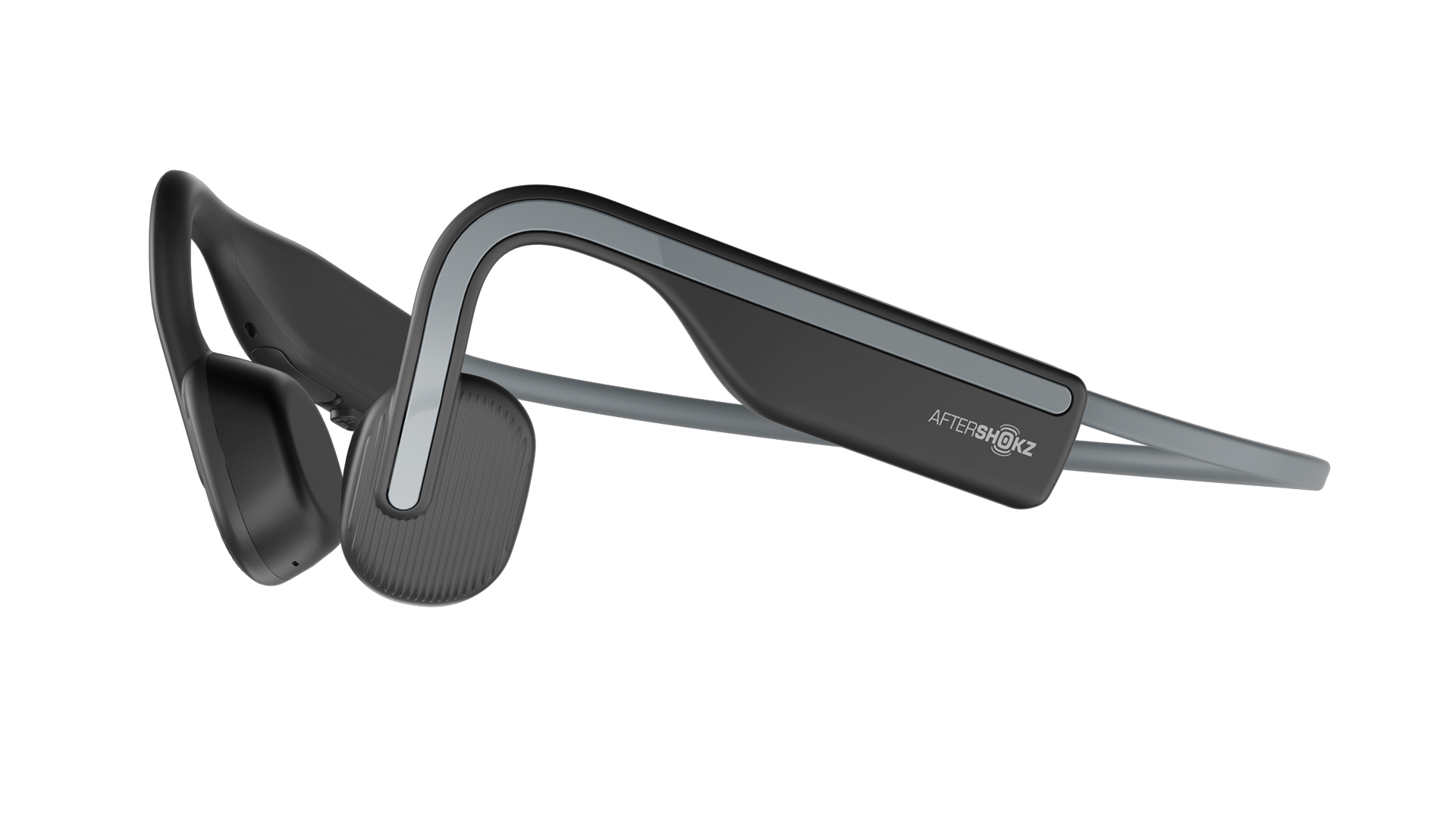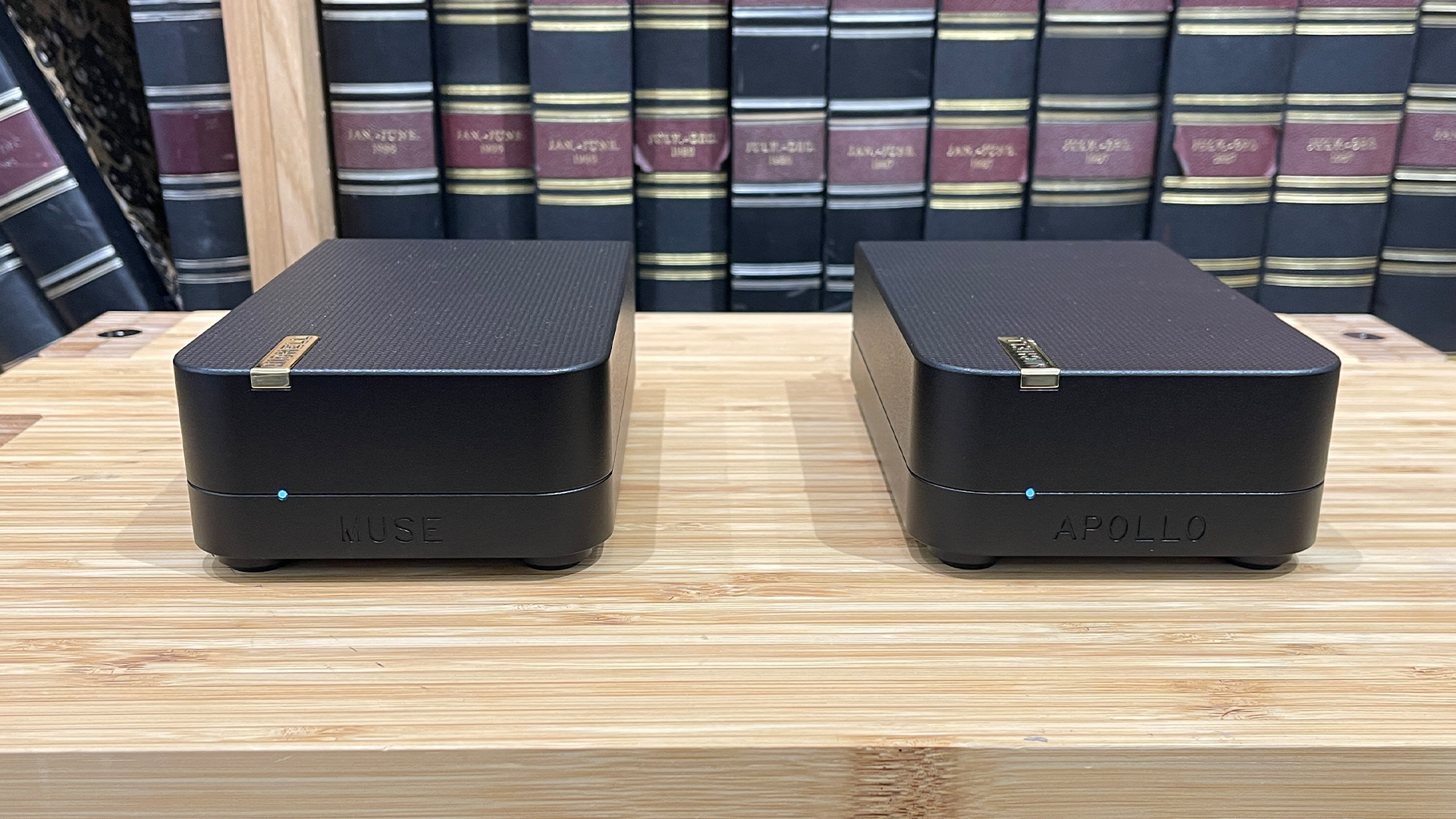What Hi-Fi? Verdict
If it’s bone-conduction tech on a budget you're after, OpenMove is a solid option. If you prioritise sound, however, there’s better value elsewhere
Pros
- +
Rock-solid build
- +
Multi-point pairing
- +
Little sound leakage
Cons
- -
Sound lacks clarity
- -
Bass could be deeper and punchier
Why you can trust What Hi-Fi?
If you want to listen to a workout mix while you’re out running, but prefer to stay alert to your surroundings, how about a pair of headphones that doesn’t cover your ears or even go into them? If that sounds intriguing, then bone conduction headphones should be on your radar.
Aftershokz is a company at the forefront of such products, though it sounds more like a manufacturer of garishly-coloured liqueur rather than hi-fi kit. The Aftershokz OpenMove are billed as entry-level sports headphones. They boast an affordable price tag, Bluetooth 5.0, a six-hour battery life, lightweight design, and an IP55 rating for dust and water ingress. So, there’s plenty to like on paper.
Build and comfort
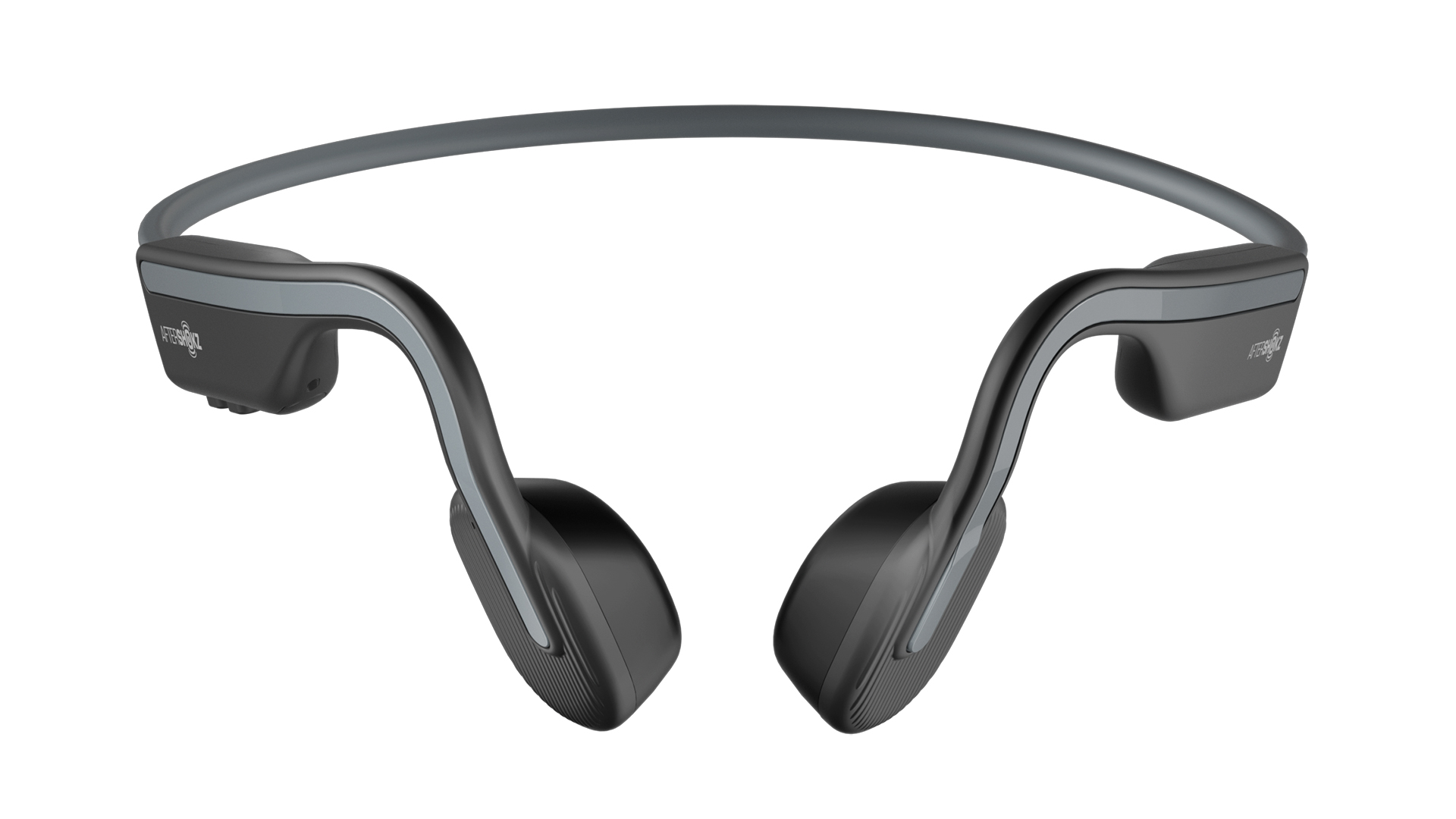
The two ‘earpieces’ actually sit on your cheekbones and work by using vibrations to transmit sound to your auditory nerve. Unless you choose to wear the earplugs and deploy the earplug EQ mode, this leaves your ears open to hear what’s happening around you.
It’s somewhat refreshing to put the OpenMove headset on without having to switch eartips since the two earpieces aren’t going into your shell-likes at all. The earpieces are pill-shaped and marginally smaller than postage stamps, while the gripping force is relatively strong for something that sits in the sensitive spot in front of your ear. It may take a little getting used to, though it is not tight enough to cause pain after a few hours of continual wear.
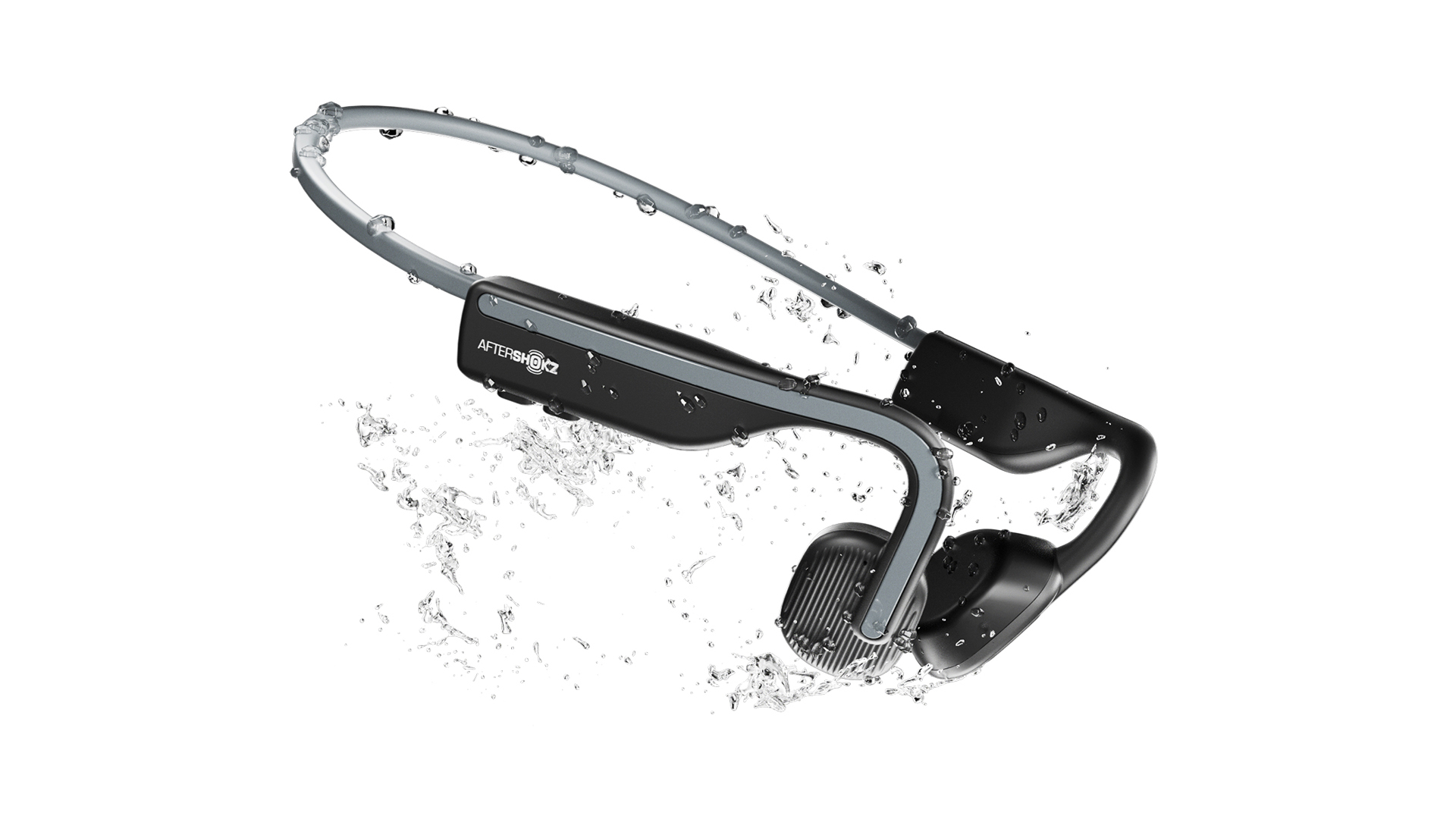
Frequency response 20Hz - 20kHz
Impedance 8 ohm
Bluetooth version 5.0
Battery life Up to 6 hours
Weight 29g
We hit the pavement in the name of research, and the headset’s lightness means it is more secure than we might have feared, staying put throughout even our fastest sprints. That said, members of the team with less hair (or no ponytail to keep the headband up) found the headset dipped more at the back. This means that the positioning of the earpieces moved slightly and altered the sound levels.
Our white sample is rubberised and boasts a classy finish that belies the entry-level price. On the right side, at a point on the headband just behind your ear during wear are two small physical buttons. These take care of volume and power on/off, while pressing both simultaneously scrolls between standard, vocal booster, and earplug modes.
The vocal booster is effective for podcast listening, making voices crisper and more pronounced, while the earplug mode reduces volume significantly. We select this mode and place the supplied plugs in our ears, however, this set-up doesn’t show the OpenMove at its best, producing a slightly woolly, echo-heavy listen. It isn’t long before we switch back to standard mode.
The latest hi-fi, home cinema and tech news, reviews, buying advice and deals, direct to your inbox.
Where the left earpiece attaches to the headband, there’s a multi-function physical button. It needs to be physically pushed and beeps to acknowledge your play/pause, track-skip, call-handling or voice-assistant requests. We find these buttons useful and rarely need to reach for our iPhone during testing – a neat feature, especially when running.
Our only real gripe with the build here is the magnets in the earpieces – particularly when you aren’t wearing the headset on your cheekbones. Most users of such devices will rest their headphones around their collar when not using them, and magnetised buds in wireless headphones can create a loose necklace that keeps your buds neat and safe. However, we find that the earpieces snap together and close in around our throats in an uncomfortable way. It’s a small negative in an otherwise classy and considered build.
Features
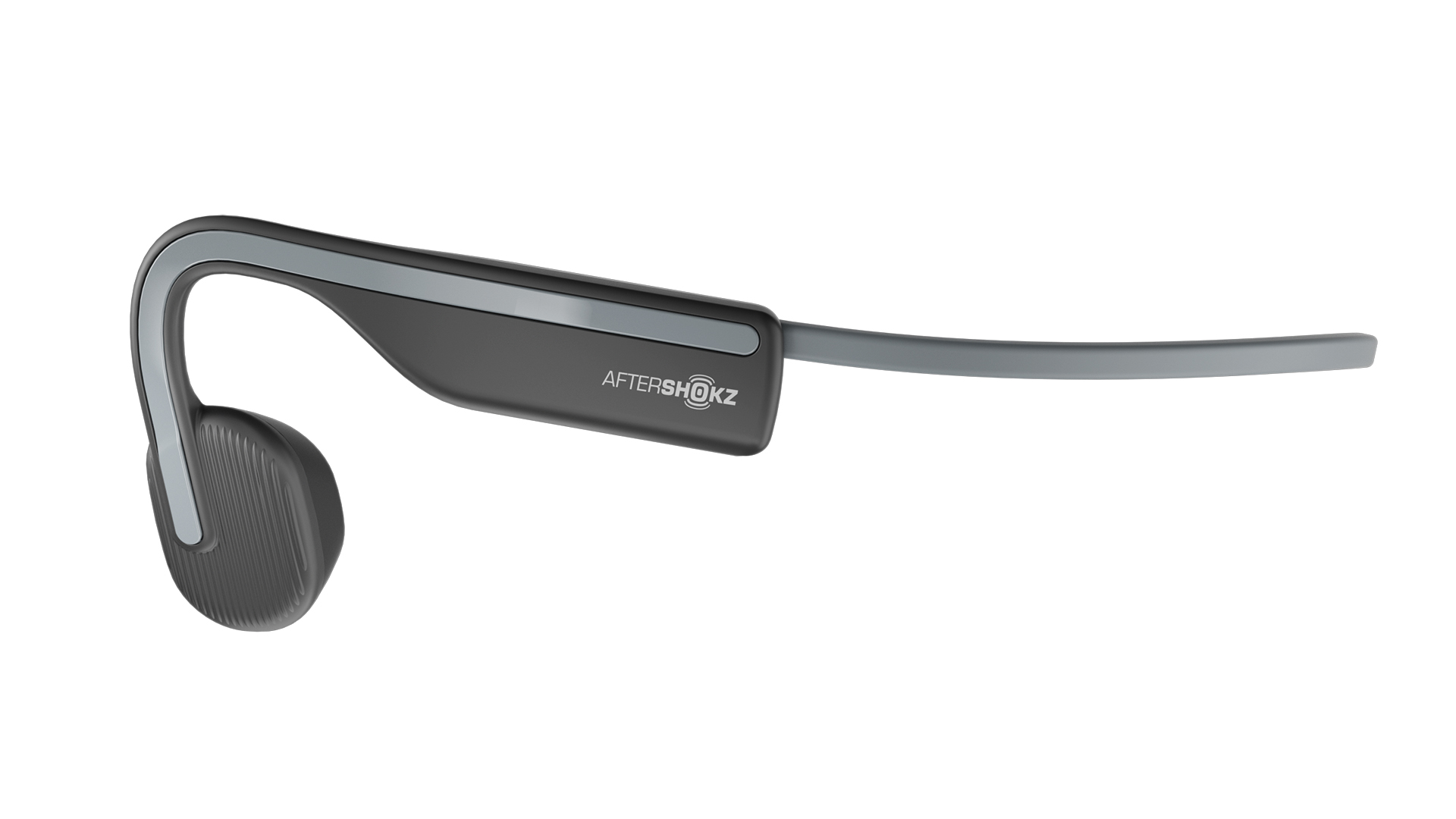
Bluetooth pairing is a breeze, and as we test the multi-point pairing feature, the OpenMove reveals why it offers a potentially decent proposition for listening at your desk as well as during workouts.
We pair the OpenMove with both our iPhone and laptop simultaneously and easily switch between them – the OpenMove simply states ‘Device two, connected’ when we pair our laptop, after pairing our iPhone. We pause audio on the iPhone and start playing a YouTube video on our MacBook Pro, and the headphones dutifully follow suit with sound.
Supported Bluetooth profiles here are the standard HSP, HFP, A2DP, AVRCP, so there’s no aptX or hi-res support, but the connection is rock-solid throughout Bluetooth streaming and during calls, which are clear thanks to dual noise-cancelling mics in the right earpiece.
Another feature that makes these headphones a good option for work is the lack of sound leakage. Because nothing is actually being piped directly into your ear, it’s natural to assume that everyone can hear the music you’re listening to, but that’s not the case. There’s far less audible leakage here than with many traditional headphones, and certainly less than with most open-backed pairs.
Bone-conduction audio tech relies on the sound being transmitted through vibrations on the bones of the head and jaw, bypassing the eardrum and relaying it directly to the inner ear, so it is virtually imperceptible to those nearby. You’ll still be able to talk to your colleagues if you wish.
Sound
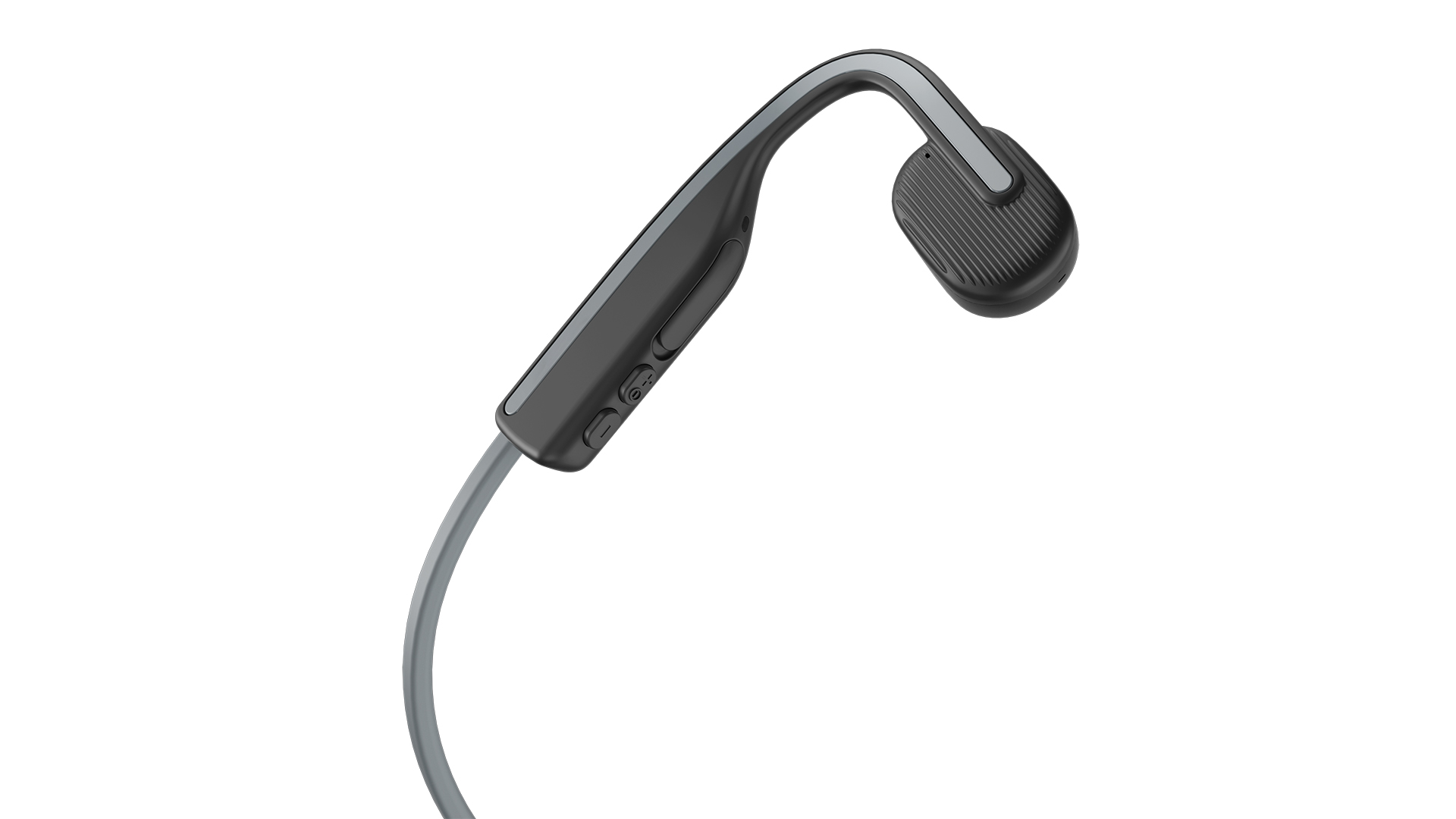
Beginning with Michael Jackson’s Billie Jean, we soon find an open presentation, with the leading edges of the intro, Jackson’s main vocal and backing stylings present and correct within the emotive track.
We stream Taki Taki by DJ Snake and Selena Gomez on Tidal and are treated to a relatively transparent performance, where the whirring and sensibly-rounded treble riff soars above Snake’s textured, central rap vocal in a cohesive soundstage. It’s a decently-judged mix that brings mids marginally forward, but we become aware of a number of shortfalls.
Our playlist continues to Daddy Yankee and Snow’s raucous Con Calma and while the various elements in the reggaeton mix, including the yelps, keys, drums and backing vocals, are given space to shine, they aren’t notably punchy.
We find we’re missing an extra ounce of bass depth too and, while lows are present in Stormzy’s grime-heavy tracks, they’re a little on the light side. Overall dynamics feel a little compressed, lacking the bite we know is present in tracks such as Vossy Bop.
Verdict
Whenever we test a set of sports headphones, especially at this entry-level price point, there’s always the delicate issue of compromise – a balance between a great sound for the money and a sports-worthy fit and features.
The Aftershokz certainly lay claim to some interesting features, and for those who want their ears to remain uncovered at the gym, the OpenMove should still be on your radar. They offer a rock-solid build, little sound leakage, decent battery life, excellent connectivity and intuitive on-device controls. However, the sound quality isn’t particularly inspiring.
For listening while at the gym or running, that proposition may well still suit some, but for those who are happy with a more traditional style of wireless headphones, there is greater sound-per-pound value to be gleaned elsewhere.
SCORES
- Sound 3
- Comfort 4
- Build 4
MORE:
Read our guide to the best sports headphones
Read our Earfun Air review
Read our JBL Reflect Flow review
Read our Cambridge Audio Melomania 1+ review
What Hi-Fi?, founded in 1976, is the world's leading independent guide to buying and owning hi-fi and home entertainment products. Our comprehensive tests help you buy the very best for your money, with our advice sections giving you step-by-step information on how to get even more from your music and movies. Everything is tested by our dedicated team of in-house reviewers in our custom-built test rooms in London, Reading and Bath. Our coveted five-star rating and Awards are recognised all over the world as the ultimate seal of approval, so you can buy with absolute confidence.
